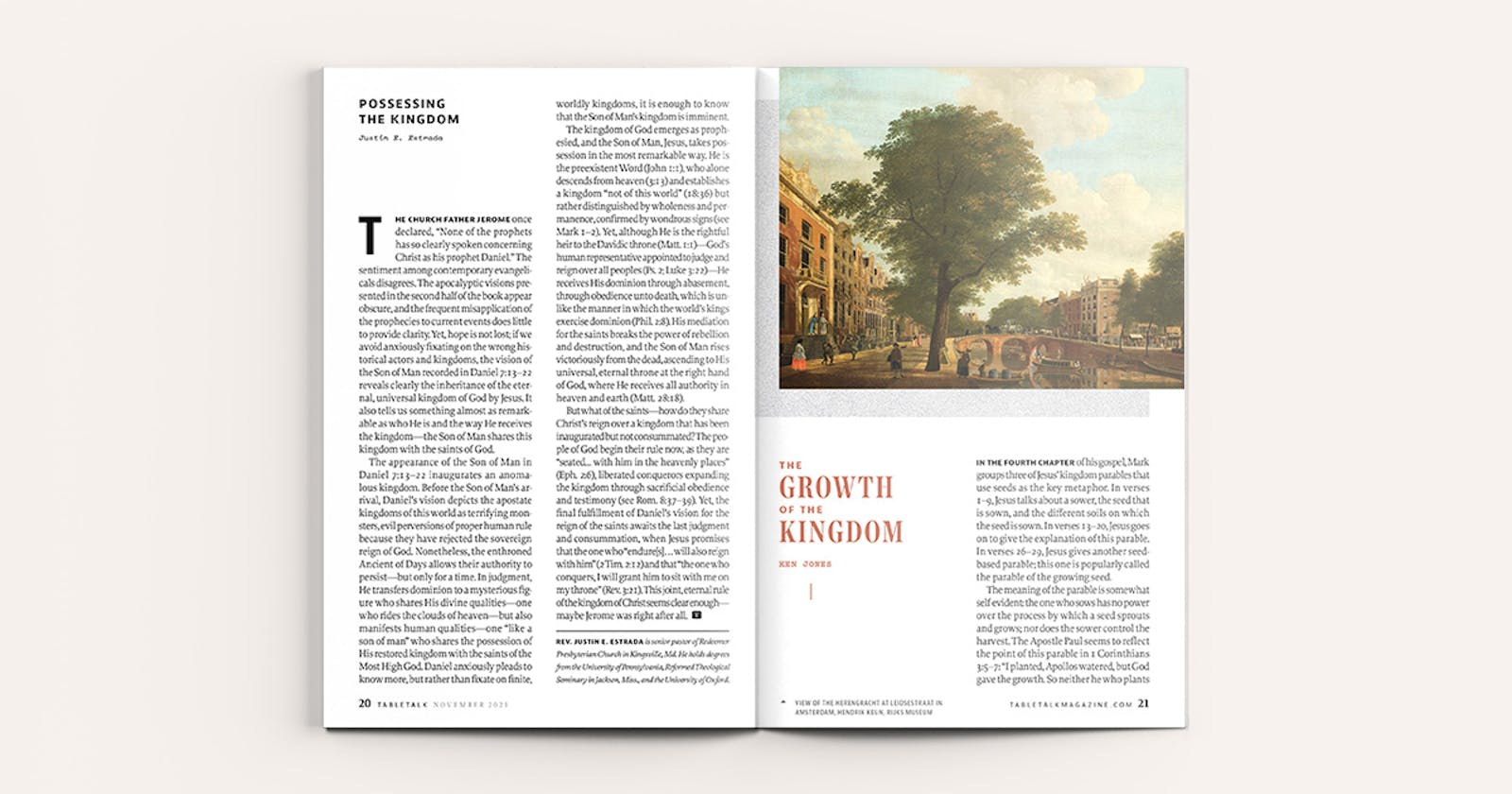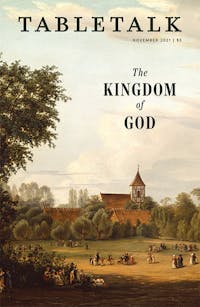
Request your free, three-month trial to Tabletalk magazine. You’ll receive the print issue monthly and gain immediate digital access to decades of archives. This trial is risk-free. No credit card required.
Try Tabletalk NowAlready receive Tabletalk magazine every month?
Verify your email address to gain unlimited access.
The church Father Jerome once declared, “None of the prophets has so clearly spoken concerning Christ as his prophet Daniel.” The sentiment among contemporary evangelicals disagrees. The apocalyptic visions presented in the second half of the book appear obscure, and the frequent misapplication of the prophecies to current events does little to provide clarity. Yet, hope is not lost; if we avoid anxiously fixating on the wrong historical actors and kingdoms, the vision of the Son of Man recorded in Daniel 7:13–22 reveals clearly the inheritance of the eternal, universal kingdom of God by Jesus. It also tells us something almost as remarkable as who He is and the way He receives the kingdom—the Son of Man shares this kingdom with the saints of God.
The appearance of the Son of Man in Daniel 7:13–22 inaugurates an anomalous kingdom. Before the Son of Man’s arrival, Daniel’s vision depicts the apostate kingdoms of this world as terrifying monsters, evil perversions of proper human rule because they have rejected the sovereign reign of God. Nonetheless, the enthroned Ancient of Days allows their authority to persist—but only for a time. In judgment, He transfers dominion to a mysterious figure who shares His divine qualities—one who rides the clouds of heaven—but also manifests human qualities—one “like a son of man” who shares the possession of His restored kingdom with the saints of the Most High God. Daniel anxiously pleads to know more, but rather than fixate on finite, worldly kingdoms, it is enough to know that the Son of Man’s kingdom is imminent.

The kingdom of God emerges as prophesied, and the Son of Man, Jesus, takes possession in the most remarkable way. He is the preexistent Word (John 1:1), who alone descends from heaven (3:13) and establishes a kingdom “not of this world” (18:36) but rather distinguished by wholeness and permanence, confirmed by wondrous signs (see Mark 1–2). Yet, although He is the rightful heir to the Davidic throne (Matt. 1:1)—God’s human representative appointed to judge and reign over all peoples (Ps. 2; Luke 3:22)—He receives His dominion through abasement, through obedience unto death, which is unlike the manner in which the world’s kings exercise dominion (Phil. 2:8). His mediation for the saints breaks the power of rebellion and destruction, and the Son of Man rises victoriously from the dead, ascending to His universal, eternal throne at the right hand of God, where He receives all authority in heaven and earth (Matt. 28:18).
But what of the saints—how do they share Christ’s reign over a kingdom that has been inaugurated but not consummated? The people of God begin their rule now, as they are “seated… with him in the heavenly places” (Eph. 2:6), liberated conquerors expanding the kingdom through sacrificial obedience and testimony (see Rom. 8:37–39). Yet, the final fulfillment of Daniel’s vision for the reign of the saints awaits the last judgment and consummation, when Jesus promises that the one who “endure[s] . . . will also reign with him” (2 Tim. 2:12) and that “the one who conquers, I will grant him to sit with me on my throne” (Rev. 3:21). This joint, eternal rule of the kingdom of Christ seems clear enough—maybe Jerome was right after all.
